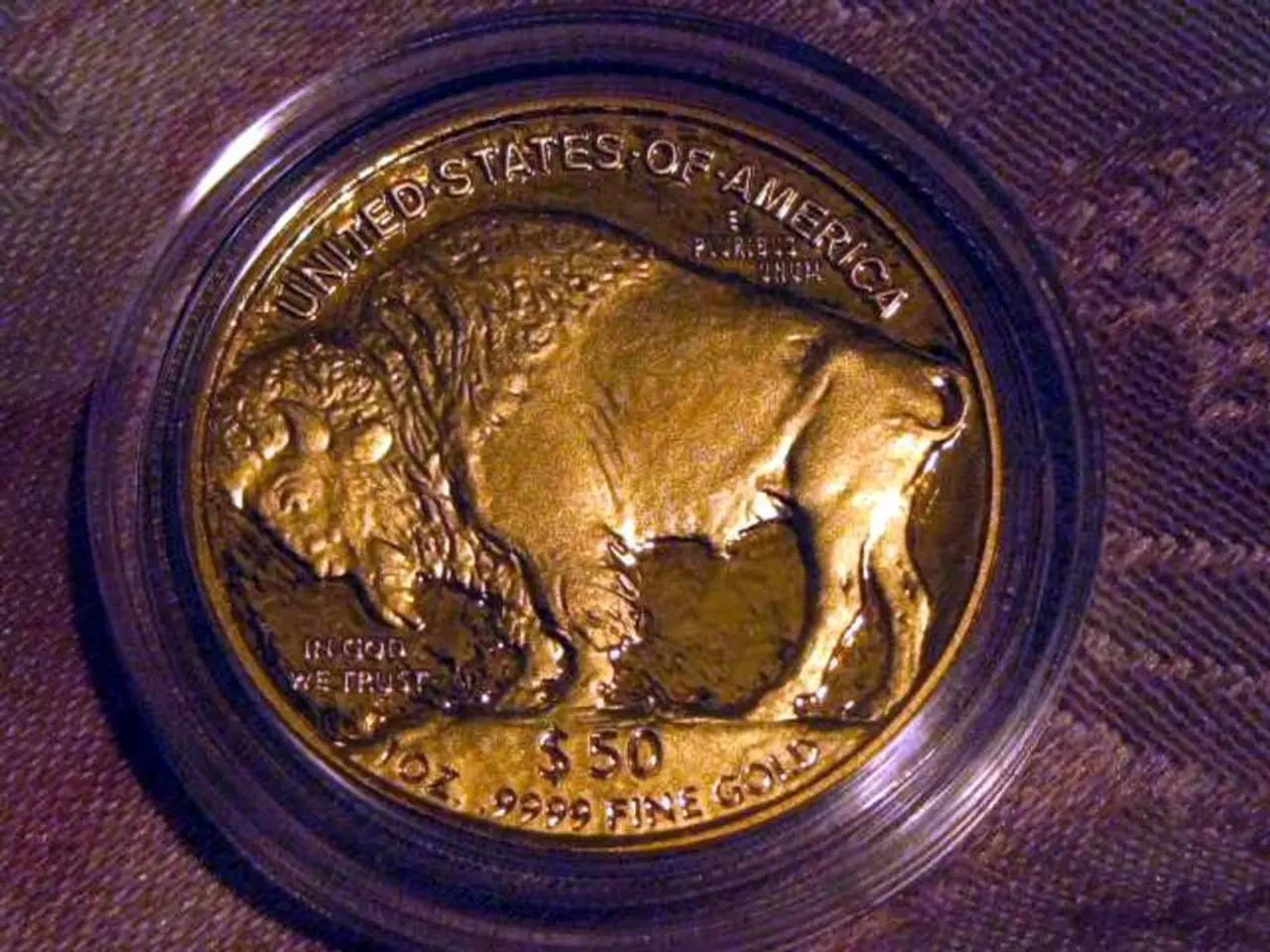Currency market trends shift as investors speculate on interest rate adjustments by the Federal Reserve, causing a decline in the US Dollar Index.
US Dollar Declines as Fed Rate Cut Expectations Mount
The US Dollar Index (DXY) has experienced a significant decline over the past week, largely due to growing expectations of Federal Reserve interest rate cuts. The DXY, which measures the greenback against a basket of major currencies, fell by approximately 0.4% from August 8 to August 15, 2025.
The largest factor weighing on the dollar this week was a growing belief among traders and analysts that the Fed is preparing to cut interest rates in September. Futures markets priced in a high probability of a 25-basis-point rate cut, with fewer traders now expecting a larger move. The US 10-year Treasury yield dipped slightly, falling from around 4.05% to near 3.98%, reinforcing a perception of a more dovish Fed stance.
Stronger-than-expected U.S. data briefly lifted the dollar during Thursday's trading, but the rally lost steam by the close. The British Pound, Euro, Japanese Yen, and emerging market currencies all gained against the dollar, finding room to appreciate due to global commodity price recovery.
Key drivers of the dollar's decline include Federal Reserve rate cut expectations, policy volatility and uncertainty, capital reallocation, interest rate divergence, and US fiscal deficits and debt concerns. Inconsistent US economic policies, especially coming from the 2024 political landscape, have reduced investor confidence and created uncertainty that weakens the dollar. Global investors are shifting funds away from the US dollar safe haven to other assets including gold, Eurozone equities, and other currencies like the Swiss franc and Japanese yen.
Factors that could influence the dollar's performance in the coming days include upcoming speeches by Fed policymakers, US Producer Price Index (PPI) data, and broader geopolitical and economic developments. Any speeches or interviews from Fed officials could provide more explicit guidance on policy intentions, which could significantly sway currency markets. Geopolitical developments, including U.S.-Russia diplomatic talks and any new trade policy announcements, could impact safe-haven flows into or out of the dollar.
In summary, the US Dollar Index is currently pressured by expected Fed easing, weaker investor confidence due to policy uncertainty, capital flows to other assets, and US fiscal concerns. Its near-term trajectory will depend largely on US inflation data, Fed communications, and broader geopolitical and economic developments.
The DXY opened the week near 98.5 and slid to approximately 97.9 by Friday's close. On Monday, August 11, the DXY started the week firm but gains were capped as traders remained cautious ahead of additional economic releases. Gold prices followed a mixed trajectory, slipping when the dollar attempted to rebound but regaining lost ground as the greenback weakened.
References: [1] Federal Reserve rate outlook [2] US inflation and currency markets [3] U.S. fiscal deficits and debt concerns [4] FX market weekly recap [5] DXY trend analysis [6] U.S.-Russia diplomatic talks [7] New trade policy announcements [8] US Producer Price Index (PPI) data
Business investors are closely watching the declining US Dollar due to mounting expectations of Federal Reserve interest rate cuts, which could negatively impact their financing costs and profit margins in cross-border transactions. As the Fed prepares to reduce rates, financiers might seek alternative investment opportunities, such as European equities or gold, to hedge against potential dollar depreciation. The strength of the US economy and policy initiatives from the 2024 political landscape will play a crucial role in restoring investors' confidence in the dollar and attracting capital back to the greenback.




